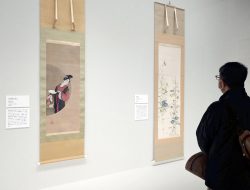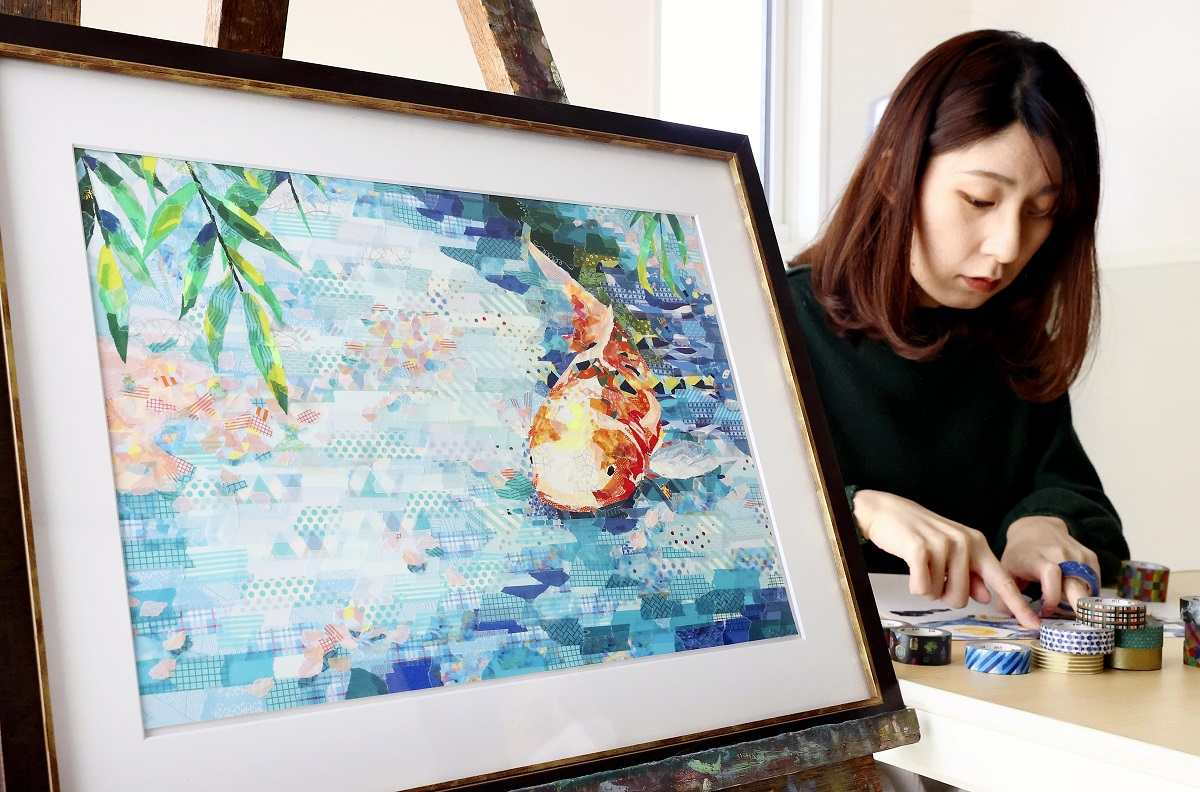
Nasa Funahara uses masking tape to create an artwork in Miyagi Prefecture. Another work is seen in the foreground.
12:00 JST, May 26, 2023
“Stationery art” has become popular in recent years as people use everyday stationery products such as masking tape and pencil lead to create art.
Nasa Funahara, 30, is a masking tape artist living in Miyagi Prefecture. She was tearing off pieces of masking tape and applying them to paper in a rhythmic motion when I visited her studio in mid-April as she created a copy of Vincent Van Gogh’s masterpiece “The Starry Night.”
Masking tape is an easily removable adhesive tape that is used temporarily for purposes such as defining edges and protecting surfaces. The tape has recently become popular among junior high and high school students to decorate their notebooks and other items in a cute way.
“Unlike paints and other art materials, you can peel the tape right off and put it back on again even if you make a mistake,” Funahara said.
Funahara uses tape made with Japanese washi paper. When torn, the paper fibers can be seen, giving it a soft feeling, she said.
Not only does she render her work in the manner of a chigiri-e collage, but she also uses long strips and boldly colored tape with polka dots and other patterns. Chigiri-e is an art form in which pictures are created from hand-torn washi paper.
Funahara said she can finish an A4-size work in about a week.
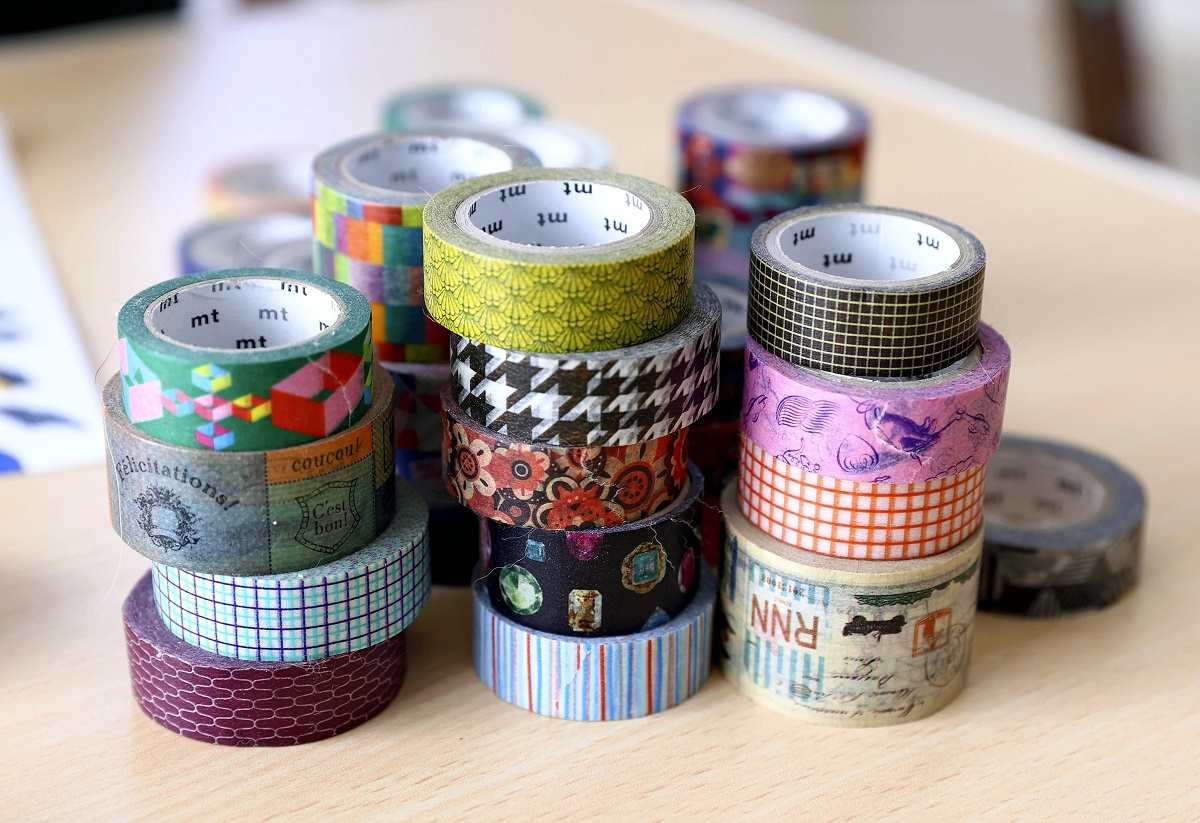
Masking tapes with various patterns can be used as a medium to create art.
Funahara began creating masking tape “paintings” when she was 19 while studying oil painting at Musashino Art University in Tokyo.
She created a copy of the “Mona Lisa” using masking tape for a project on portraits and received positive feedback. Since then, she has been teaching herself and honing her skills.
In addition to creating original artwork, Funahara also copies famous paintings because she wants people who feel little connection to art to be able to experience it in a casual manner. She believes that if people know her works are made with masking tape, they may gain an affinity for art.
Her artwork has been included on overseas internet news sites and other media.
‘Consumables’ as the medium
“Pencil Sculptor Shiroi” is known for works carved out of pencil lead.
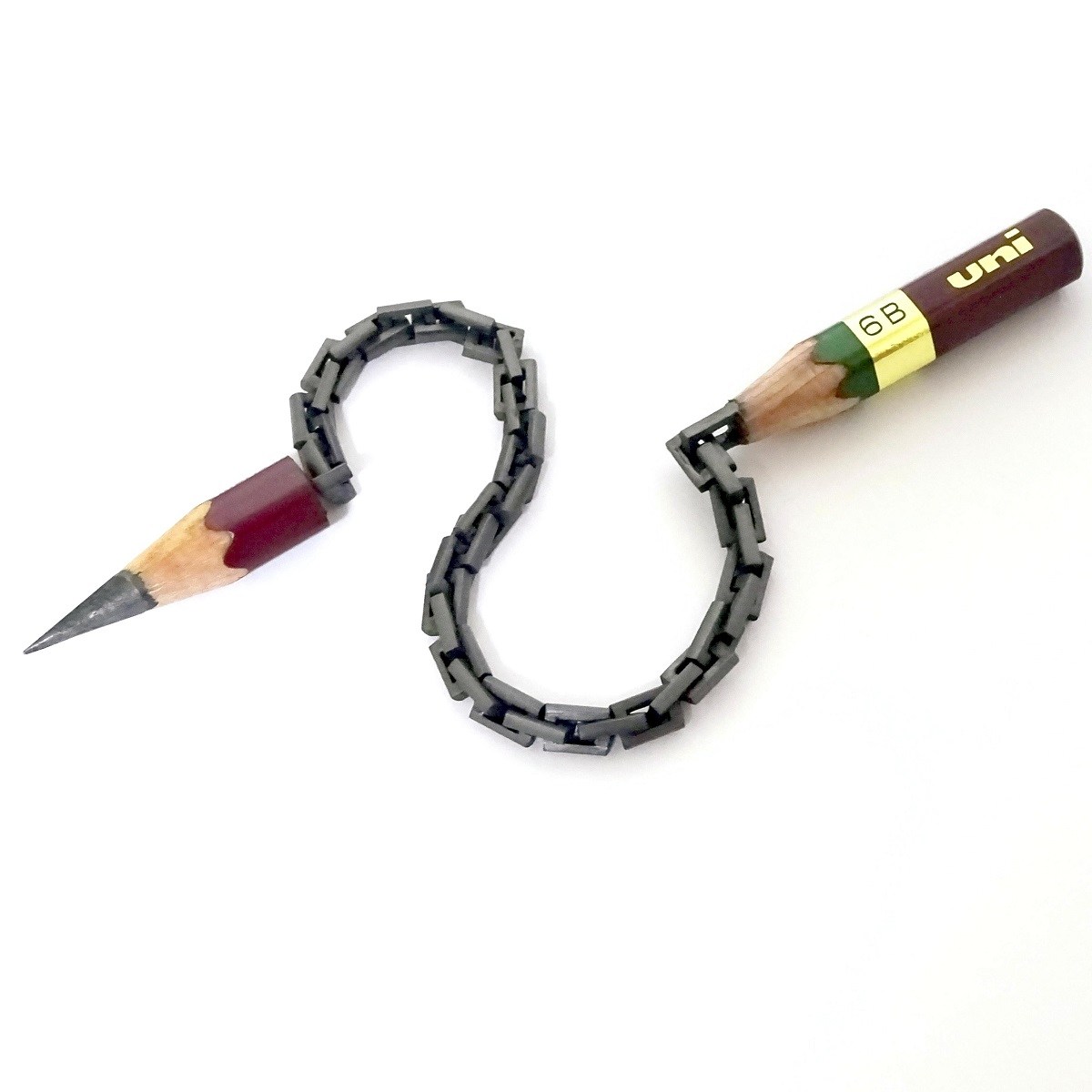
The artist started using this medium after being inspired by the works of pencil sculptors that he saw on TV and the internet.
He posted a sped-up video on Twitter in 2019 in which he carved out the letters of the alphabet by shaving the lead with a design knife. Such superb craftsmanship became a topic of conversation.
It took a month to carve a chain in a pencil’s lead using sandpaper and needles.
He has created about 300 pencil lead artworks.
Ryo Sehata, 49, uses cellulose adhesive tape to make art.
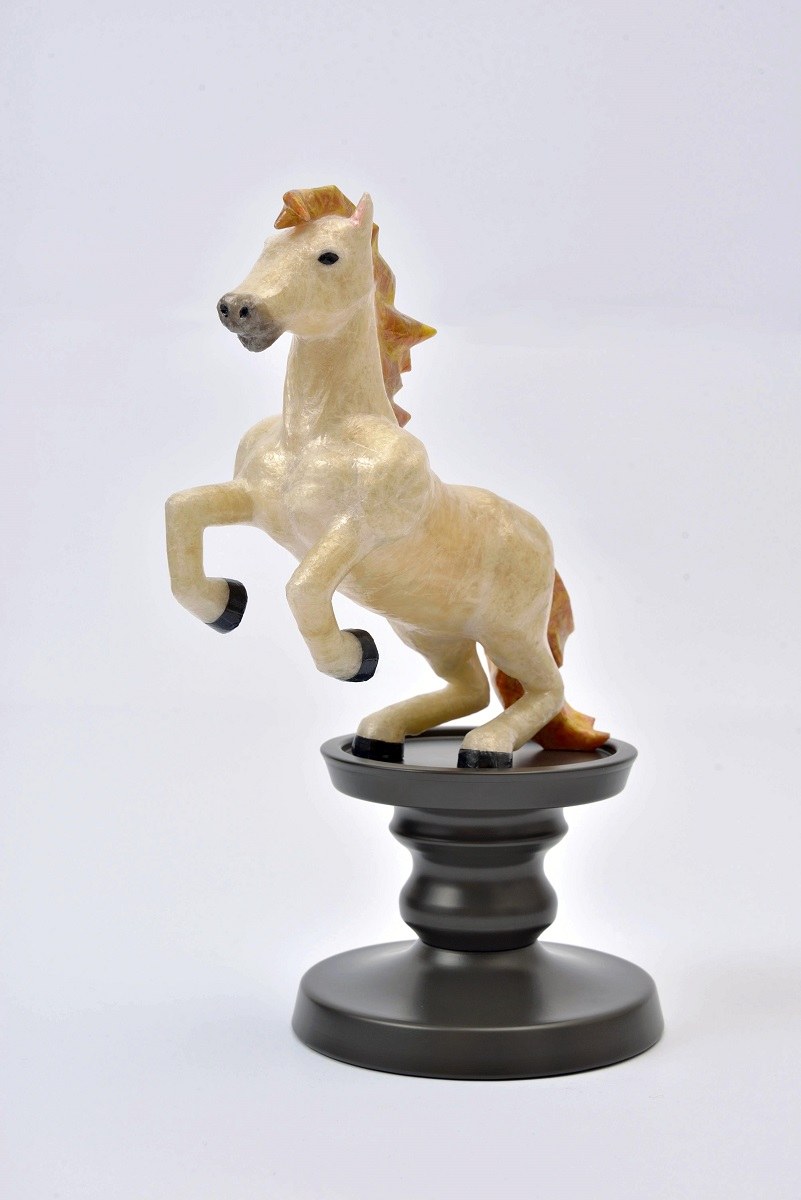
He created a horse by tightly rolling cellulose tape and arranging the curves and unevenness of the tape.
As a child, Sehata noticed that some tape he rolled up after making a mistake on a craft project hardened quickly and was difficult to break. Since then, he has been obsessed with making things with cellulose adhesive tape.
After graduating from Tokyo Zokei University, he signed an exclusive artist contract with Nichiban Co., which owns the registered trademark for “Cellotape.” He will hold a solo exhibition in June.
Sehata hopes people will enjoy his artwork, which is made from a ‘consumable’ item.
According to Maiko Kikuchi, a writer and a member of the International Association of Art Critics, interest in stationery art has been growing over the past two to three years.
Amid the pandemic, stationery art has come to be seen as art form that can be created in the comfort of one’s home using everyday products.
Kikuchi said that with the proliferation of artists posting their work on social media, the number of people following in their footsteps is increasing.
“The surprise and gap of these elaborate artworks being created with everyday stationery products found in the home captured people’s hearts,” Kikuchi said.
Kikuchi said stationery art, which was born as a subculture, may be evaluated as contemporary art form with works fetching high prices someday.
Tearing masking tape by hand adds ‘warmth to a work’
Here are tips for creating a “painting” using masking tape.
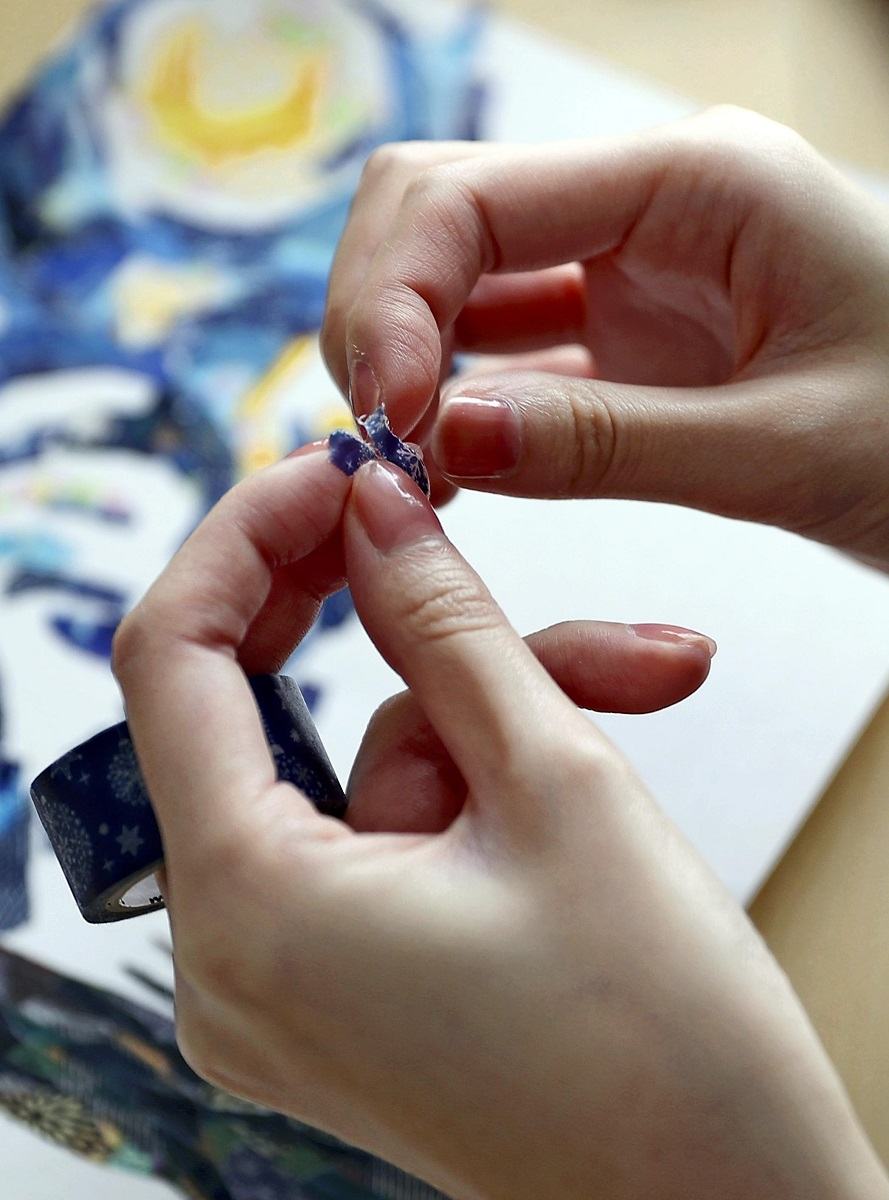
Nasa Funahara tears off tiny pieces of masking tape by hand.
First prepare some paper with a smooth surface such as a postcard or printer paper and then draw a rough sketch with a pencil or other medium.
“When applying the tape, tear it off by hand,” Funahara said. “This gives warmth to the work.”
If you use about 10 types of tape, some plain and some with patterns, you can create a variety of effects in an artwork.
After the work is completed, frame it to keep it in good condition.
Since no hands get messy, and scissors and cutters are not used, people of all ages, from children to the elderly, can enjoy making masking tape paintings.
"Culture" POPULAR ARTICLE
-

Van Cleef & Arpels Dazzles with Art Deco Artisanry at Tokyo Exhibit
-

Disney’s ‘Twisted-Wonderland’ Animated Series Puts Villains in Spotlight: New Show Features School Inspired by Classic Disney Films
-

Japan Plans to Distribute Manga Overseas Via New Platform
-

Ayumi Hamasaki’s Shanghai Concert Canceled Day Before Schedule as Part of Beijing Backlash
-

‘The World Masterpiece Theater Series’ Celebrates 50 Years; Animator Looks Back on Creating Anime Classics
JN ACCESS RANKING
-

Tokyo Economic Security Forum to Hold Inaugural Meeting Amid Tense Global Environment
-

Keidanren Chairman Yoshinobu Tsutsui Visits Kashiwazaki-Kariwa Nuclear Power Plant; Inspects New Emergency Safety System
-

Imports of Rare Earths from China Facing Delays, May Be Caused by Deterioration of Japan-China Relations
-

University of Tokyo Professor Discusses Japanese Economic Security in Interview Ahead of Forum
-

Japan Pulls out of Vietnam Nuclear Project, Complicating Hanoi’s Power Plans




